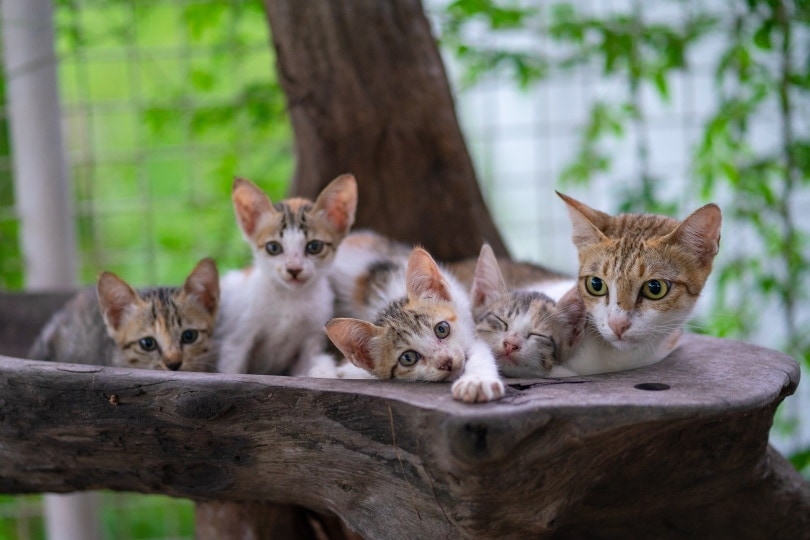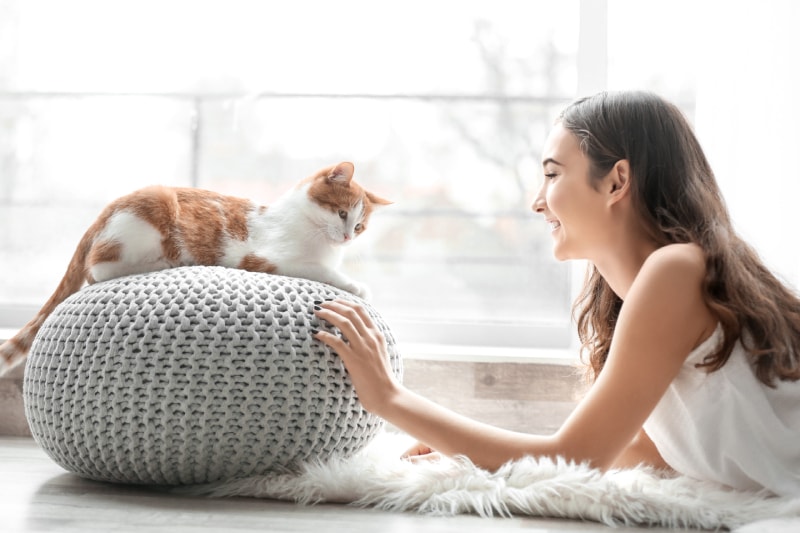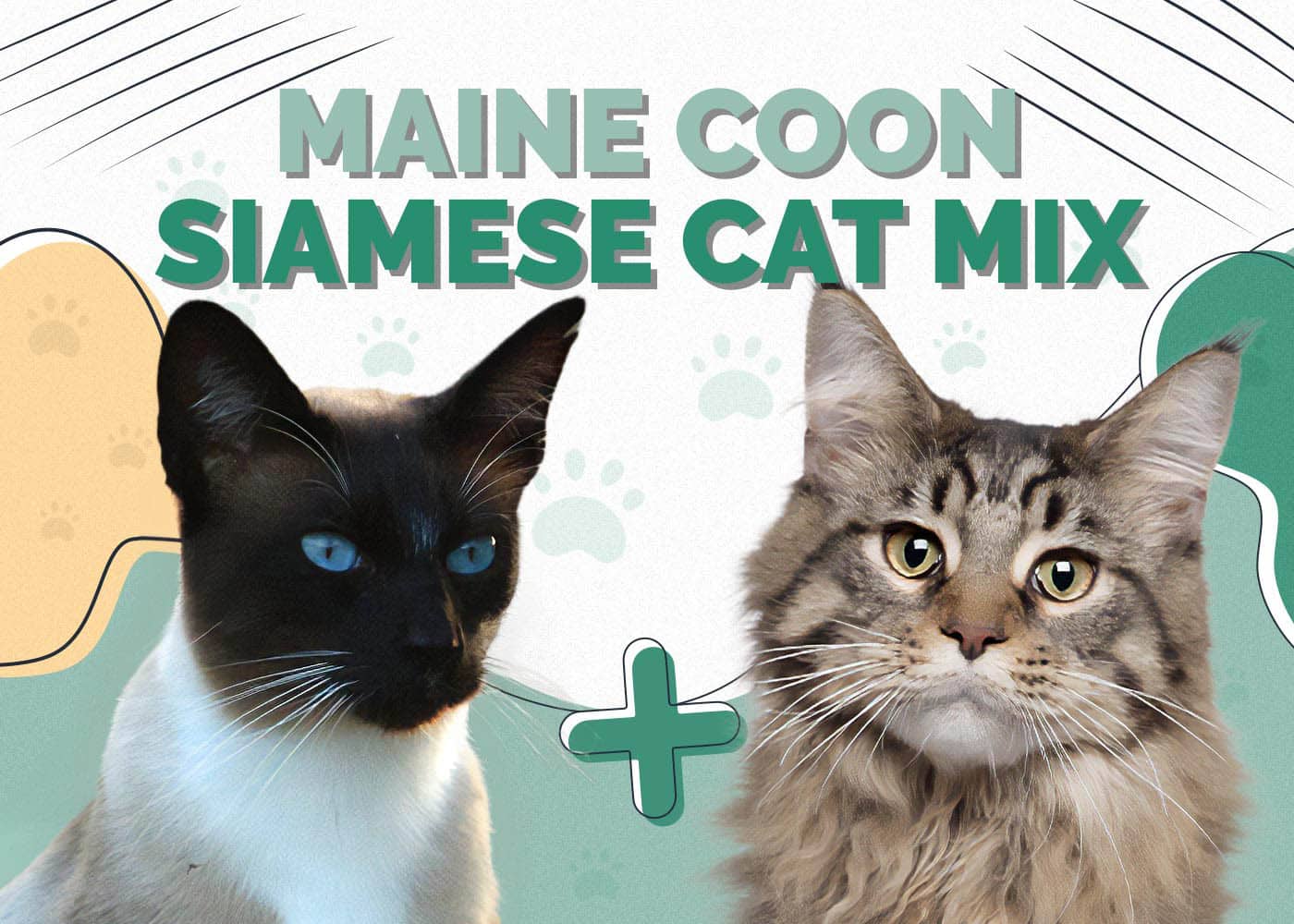White British Shorthair Cat: Facts, Origin & History (With Pictures)

Updated on
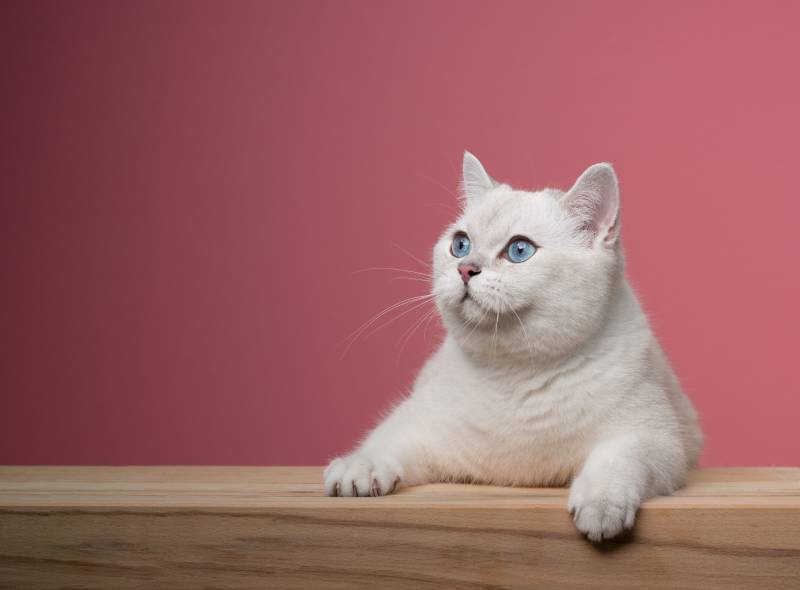
The British Shorthair is one of the most popular cat breeds in the world, and white is one of their most popular color options. But did the British Shorthair really come from Britain, when did they become their own breed, and what other fun facts are there to know?
It’s a lot to sift through, but keep reading and we’ll answer all those questions and more for you here!
The Earliest Records of White British Shorthair Cats in History
Some animals have a storied history, then there’s the British shorthair. There are two competing theories about where the breed comes from, and interestingly enough, neither of these theories has the cat originating from Britain!
That theory says Roman legionnaires that invaded the island over 2,000 years ago brought the cats. There are mentions of gray cats that match the description of a British Shorthair during this time, and if there were gray British Shorthairs there were white ones too!
The second theory of the origin of the British Shorthair involved France. The theory involved French monks raising, breeding, and selling the cats, and from there the cats made their way to Britain when French sailors visited the island.
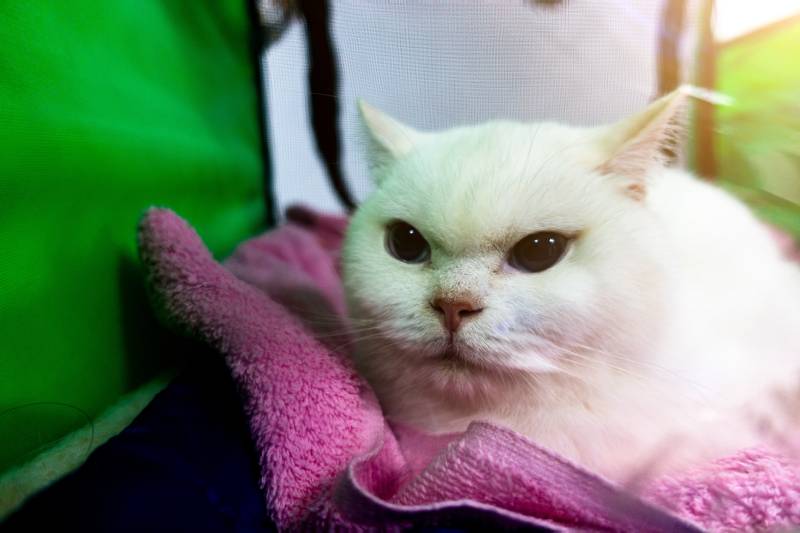
How White British Shorthair Cats Gained Popularity
Whether they came from the French or the Romans, the people in Britain quickly took a liking to the cat we now call the British shorthair. These cats originally gained their popularity for functional reasons.
The British Shorthair has excellent vision, is overall healthy, and, most importantly, is a phenomenal hunter. This made them a great way to keep rats and rodents away from storerooms.
However, as time progressed, people didn’t need these features quite as much, but the British Shorthair remained a popular option because of their appearance and demeanor.
British Shorthairs present a calm and regal demeanor, so you don’t have to worry about these cats racing around your home quite as much as other breeds.
Formal Recognition of White British Shorthair Cat
The Cat Fanciers Association is one of the oldest formal recognition clubs for cats, establishing itself in 1906. However, it took a while longer for them to officially recognize the British shorthair.
The CFA formally recognized the breed in May of 1980, 74 years after its founding! With a cat with a storied history like the British shorthair, it’s a bit surprising that it took them so long to recognize the breed.
Still, the CFA recognizes the white British Shorthair as an official color marking for the breed, but only if they are pure white. Cats with tipped colors or yellow don’t qualify, and white British Shorthairs need to have deep sapphire blue, gold, or copper eyes.
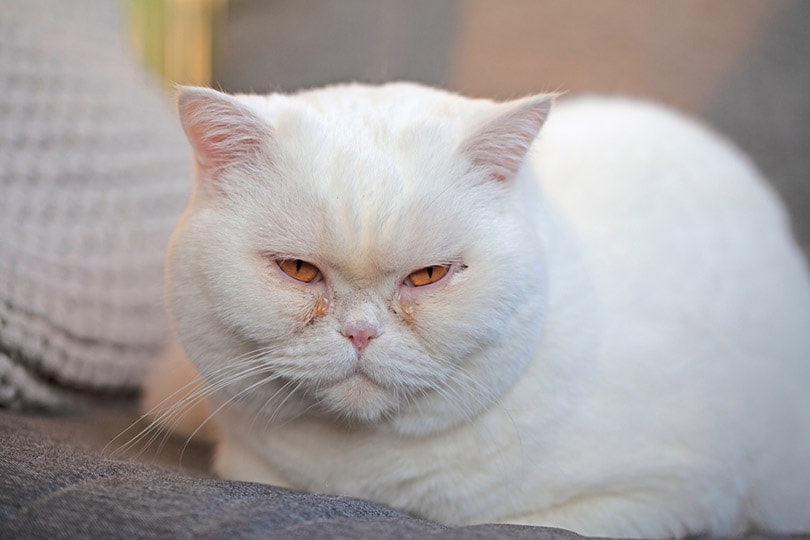
Top 5 Unique Facts About the White British Shorthair Cat
The White British Shorthair is an extremely interesting cat breed and they’re full of interesting facts. We’ve highlighted five of the most unique facts about white British Shorthair cats for you here.
1. British Shorthair Cats Are Low-Energy Pets
British Shorthair cats are one of the laziest cat breeds around. They’ll move for food but getting them moving for anything else can be a challenge at times. You’ll need to find a way to get them moving some to avoid obesity, but aside from that you can expect the British Shorthair to lounge around for most of the day.
2. They Are Outstanding Hunters
While the British Shorthair is a low-energy cat, they’ll always move for food. They view prey as food, so they’ll find the energy to hunt them down!
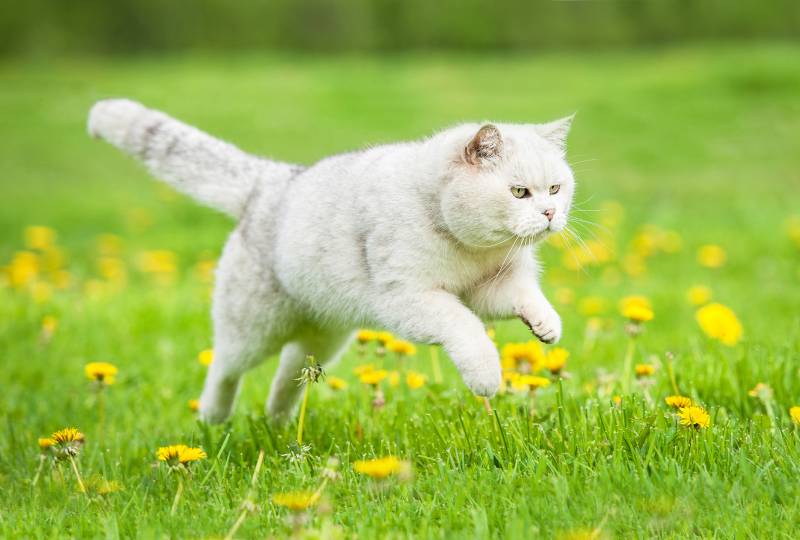
3. British Shorthair Cats Do Well Alone
Some pets need tons of time and attention from their owners. And while a British Shorthair does need to spend some time with their person, they don’t need to spend quite as much time as other cats. So, if you have a busy job, this might be the breed for you.
4. They Are the Most Popular Type of Cat in the UK
The British Shorthair has been one of the most popular cat breeds in the UK for quite some time. They claimed the number one position in 2001, and they’ve yet to give up the top spot.
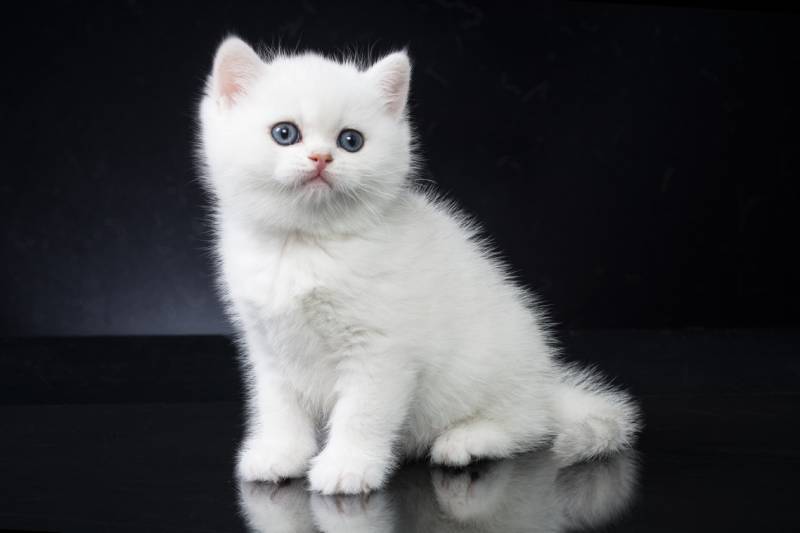
5. They Can Live Up to 20 Years
Cats live a long time, and the British Shorthair is no exception. They can live up to 20 years, which means you’ll get plenty of time with your furry friend!
Does a White British Shorthair Cat Make a Good Pet?
Yes! With a calm demeanor, a loving personality, and a long lifespan, a white British Shorthair makes an outstanding pet. They also have minimal grooming needs, making them an excellent choice for first-time cat owners. However, tracking down a white British Shorthair can be an expensive process.
Getting one from a breeder can cost anywhere between $1,500 and $2,000, so don’t expect to get by with a cheap purchase! But as soon as you bring your kitten home, you’ll see that they’re well worth the higher price tag.
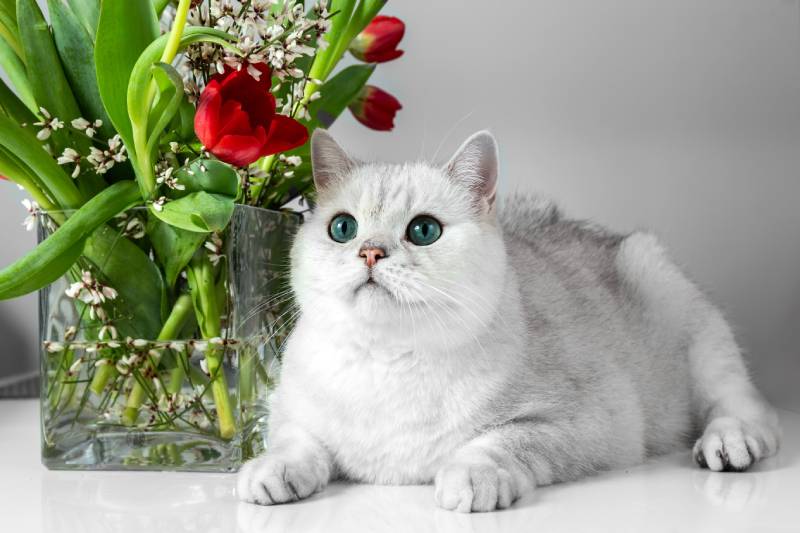
Conclusion
The white British Shorthair is a cute and adorable cat with tons to love. Now that you know a little more about them it’s up to you if you want to get one for yourself or if you just want to admire them from afar.
Either way, you can enjoy their cute appearance, calm demeanor, and rich history a little more now that you know a bit more about them!
See also:
Featured Image Credit: Nils Jacobi, Shutterstock


